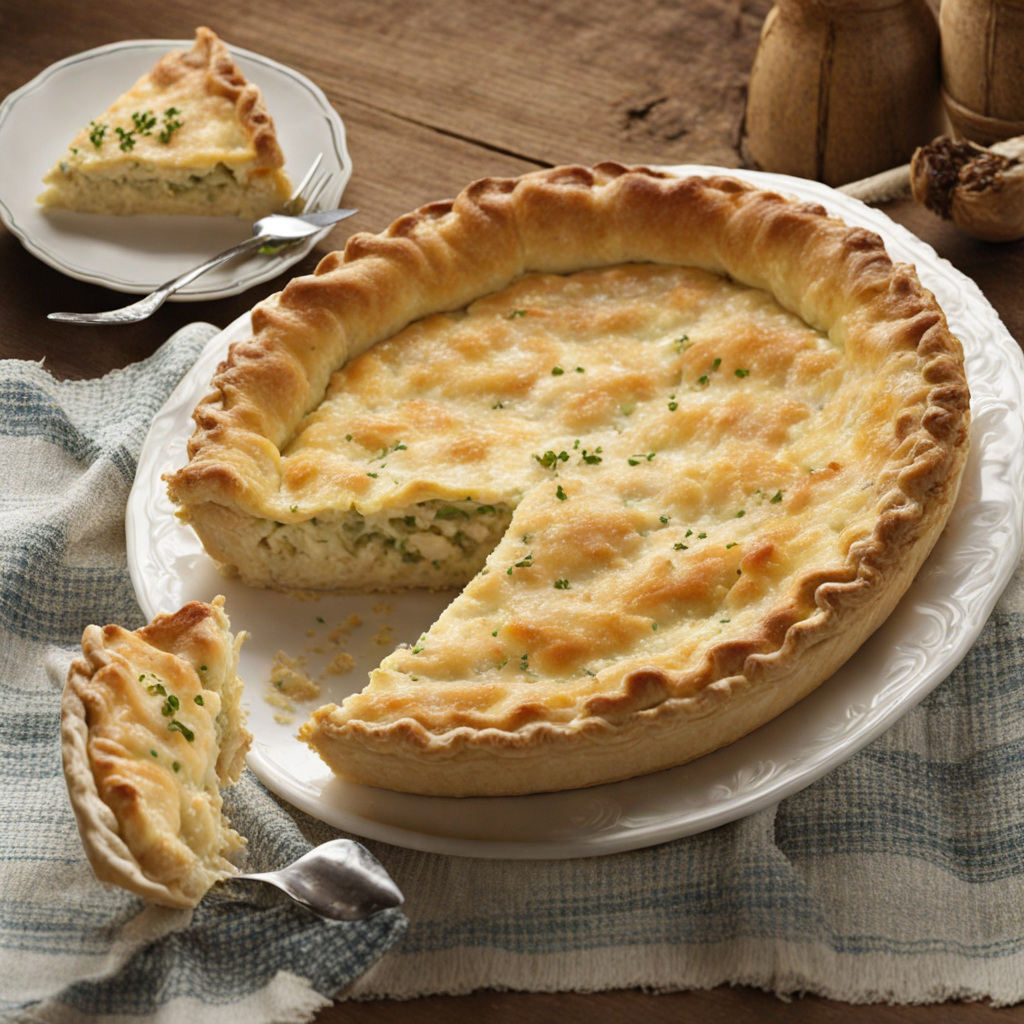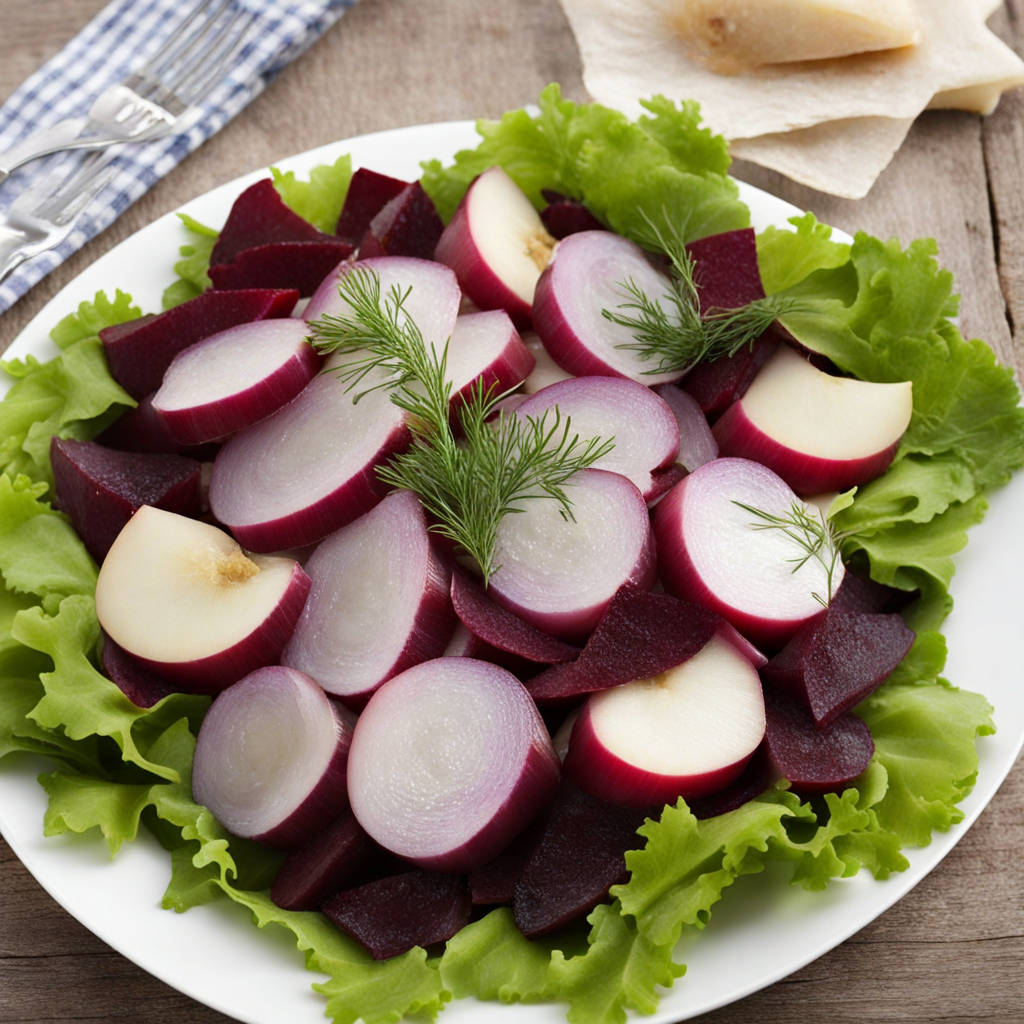Potato Dumplings
Potato dumplings, known as "kroppkakor" in Sweden, are a delightful and hearty dish that showcases the versatility of potatoes. These dumplings are typically made from a mixture of grated or mashed potatoes combined with flour, which creates a soft and pliable dough. The dough is then shaped into small balls or discs, which are often filled with a savory mixture of diced pork or smoked meat, along with onions and spices, adding a rich flavor profile to each bite. The dumplings are usually boiled until they float to the surface, indicating they are cooked to perfection, resulting in a tender and satisfying texture. When served, kroppkakor are often accompanied by a dollop of lingonberry sauce or a drizzle of melted butter, which enhances their flavor and provides a delightful contrast. The tartness of the lingonberries complements the richness of the dumplings, making each bite a harmonious blend of flavors. This traditional dish is not only a comfort food but also a celebration of Swedish culinary heritage, often enjoyed during family gatherings and festive occasions. Exploring the taste of potato dumplings is an experience that reveals the heart and soul of Swedish cuisine. The combination of the soft, pillowy exterior with the savory filling creates a satisfying dish that warms the body and lifts the spirit. As you indulge in kroppkakor, you'll discover a unique and rustic taste that reflects the simplicity and authenticity of traditional Swedish cooking, inviting you to savor every moment of this culinary journey.
How It Became This Dish
The History of Palt: A Swedish Culinary Tradition Palt, a traditional dish from Sweden, embodies the rustic charm and culinary ingenuity of Scandinavian cuisine. This hearty potato dumpling has roots that stretch deep into Sweden’s agricultural past, reflecting both the region's natural resources and the cultural practices of its inhabitants. Its existence speaks volumes about the adaptability and resourcefulness of Swedish communities through generations. #### Origins of Palt The origins of palt can be traced back to rural Sweden, where food was often a matter of survival. The dish is primarily associated with the northern regions of Sweden, particularly Norrland, where potatoes were a staple crop. Palt is essentially a dumpling made from a mixture of grated raw potatoes, flour, and sometimes a filling, which traditionally includes meat such as pork or beef. The use of potatoes can be attributed to their introduction to Sweden in the 18th century, after being brought over from the Americas. They quickly became a vital ingredient due to their versatility and nutritional value, particularly in the colder northern climates. Historically, palt was a food of necessity. Rural Swedish families often had limited resources, and palt was a way to stretch ingredients and make the most of what was available. The dish was often prepared in large batches, allowing families to feed many mouths at once. This practicality is a hallmark of Swedish cuisine, which tends to emphasize hearty, filling, and straightforward dishes that make use of local ingredients. #### Cultural Significance Palt is not merely a dish; it is a symbol of Swedish heritage and identity. For many Swedes, it evokes memories of family gatherings and traditional celebrations. In the northern regions, palt is particularly significant as a comfort food, often associated with winter festivities. It is commonly served during the colder months, providing warmth and sustenance when resources are scarce. The preparation of palt has been passed down through generations, with each family often having its own unique recipe or method of preparation. This familial tradition contributes to the dish's cultural significance, making it a point of pride for many who still prepare it according to their ancestors' methods. In contemporary Sweden, palt is celebrated not only for its taste but also for its cultural heritage. It is often featured in local festivals, food fairs, and even in restaurants that focus on traditional Swedish cuisine. The dish embodies the spirit of “lagom,” a Swedish concept that reflects a sense of balance and moderation, which is a fundamental aspect of Swedish life. #### Development Over Time As Sweden underwent social and economic changes, so too did palt. The 19th century saw a shift in agricultural practices, the advent of industrialization, and urbanization, which influenced the way food was produced and consumed. With more people moving to cities, the traditional ways of preparing and enjoying rural dishes like palt started to evolve. In urban settings, palt began to take on variations that reflected the diverse backgrounds and tastes of the population. While traditional recipes remained cherished, new ingredients and cooking methods were introduced, leading to a fusion of culinary traditions. For instance, in some modern variations of palt, alternative fillings such as smoked fish or mushrooms have emerged, showcasing the dish's adaptability. Moreover, the rise of the farm-to-table movement in recent decades has rekindled interest in traditional foods like palt. As consumers have become more health-conscious and interested in sustainability, there has been a resurgence in the appreciation for locally sourced, wholesome ingredients. This trend has encouraged chefs and home cooks alike to revisit the traditional methods of making palt, often using organic potatoes and locally sourced meats. #### Palt in Modern Sweden Today, palt enjoys a dual status: it is both a beloved traditional dish and a canvas for culinary innovation. In recent years, food enthusiasts and chefs have started experimenting with palt, incorporating modern techniques and flavors while still honoring its rich heritage. This has led to a revival of interest in Nordic cuisine as a whole, positioning dishes like palt at the forefront of contemporary culinary discussions. One of the most popular modern iterations of palt is “paltkoma,” a dish that serves palt alongside various accompaniments like lingonberry sauce, melted butter, or rich gravies. This has helped to elevate palt from a simple comfort food to a dish that can be appreciated in fine dining contexts. Food festivals celebrating traditional Swedish cuisine often feature palt, providing a platform for chefs to showcase their interpretations of the dish. In addition to its culinary evolution, palt has also made its way into popular culture. It is often referenced in Swedish literature and media, symbolizing a connection to the land and tradition. The dish has become emblematic of Swedish identity, celebrated not just for its taste but for the stories and memories it encompasses. #### Conclusion Palt is much more than a potato dumpling; it is a testament to Sweden's agricultural history and cultural resilience. From its humble beginnings in rural kitchens to its place in modern culinary culture, palt has endured through centuries, adapting and evolving while remaining rooted in tradition. As Swedes continue to celebrate and innovate upon this iconic dish, palt remains a cherished part of Sweden's gastronomic heritage, reflecting the enduring connection between food, culture, and community. In every bite, there lies a story of survival, adaptation, and identity—one that is as rich and hearty as the dish itself.
You may like
Discover local flavors from Sweden






